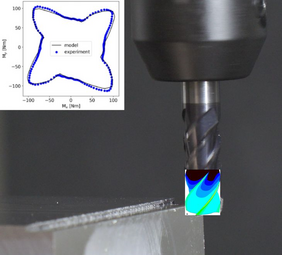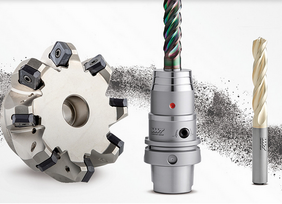Milling machines are impressive examples of power brought to the point. Enormous forces act on the cutting edge of metal-cutting tools. And the tools are enduring - to enable the machining of ever more demanding materials in an energy- and cost-saving way. But this is only possible for a limited amount of time.
Great efforts are made to determine the best time to replace the tool - not too early, but also not too late. The basis for this is extensive data from the machine, which provides information on the traverse path, torque and spindle current, among other things. From the development of these variables, an attempt is made to infer the damage state of the tool in order to enable the timely and automated replacement of damaged tools. This is intended to increase process reliability and productivity.
Although many milling machines are extensively instrumented, the continuous acquisition and extraction of sensor data has not been a focus until recently. Accordingly, accessing and extracting high-frequency data streams is difficult on many machines. One exception is the automation manufacturer Heidenhain, who enables access to high-frequency sensor data with little effort. Heidenhain also supplies CNC controls for all common types of machine tools for the machining operations milling and turning.
In cooperation with the company partners Ro-Ra, TCM and Ceratizit, MCL has carried out test measurements on milling machines and obtained extensive data sets for further analysis. In order to minimize the effort for data acquisition and to keep the data quality high, a software was created to automatically check and merge high-frequency data streams from Heidenhain controls.
Impact and effects
MCL is now able to provide the knowledge acquired around the data acquisition of milling machines efficiently to other research projects. Using so-called hybrid semi-parametric models, the data obtained in this way is used to draw conclusions about the condition of the tool and its cutting edges from the data during the milling process. These models combine the world of calculating process forces with the world of data analysis and thus improve the accuracy of the diagnosis of the tool condition.
The industrial partners intend to use the real-time capable, i.e. capable of reacting in time during ongoing workpiece machining, "condition monitoring" system resulting from the already running follow-up project, to avoid catastrophic tool breakage during machining. Furthermore, such a system will significantly accelerate the determination of tool operating limits as a function of operating conditions.
Project coordination (Story)
Dr. Thomas Klünsner
Group Leader Hard Metals
Department Materials
Materials Center Leoben Forschung GmbH
T +43 (0) 3842 45922-33
thomas.kluensner(at)mcl.at
IC-MPPE / COMET-Zentrum
Materials Center Leoben Forschung GmbH
Roseggerstrasse 12
8700 Leoben
T +43 (0) 3842 45922-0
mclburo@mcl.at
www.mcl.at
Project partners
• Ceratizit Austria GmbH, Austria
• Tool Consulting & Management GmbH, Austria
• Ro-Ra Aviation Systems, Austria
• Montanuniversität Leoben, Austria




















